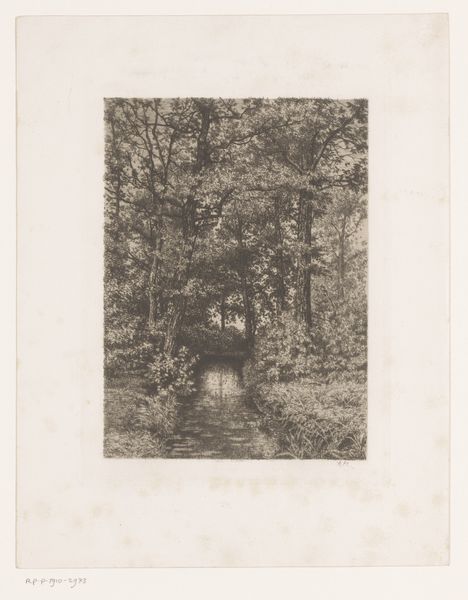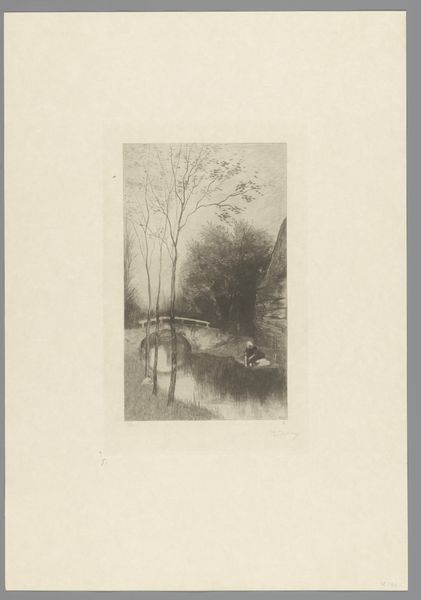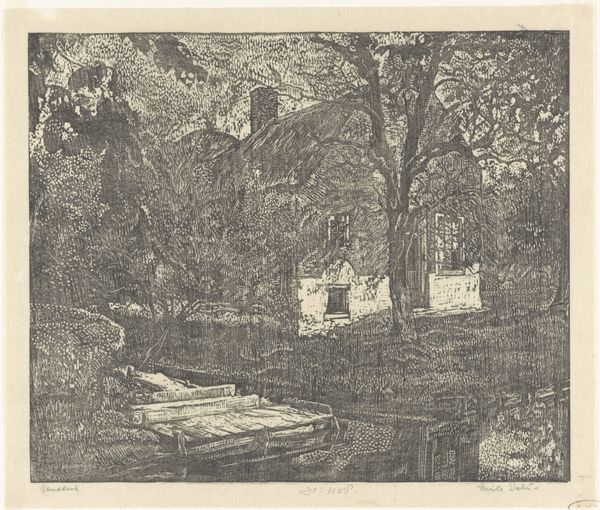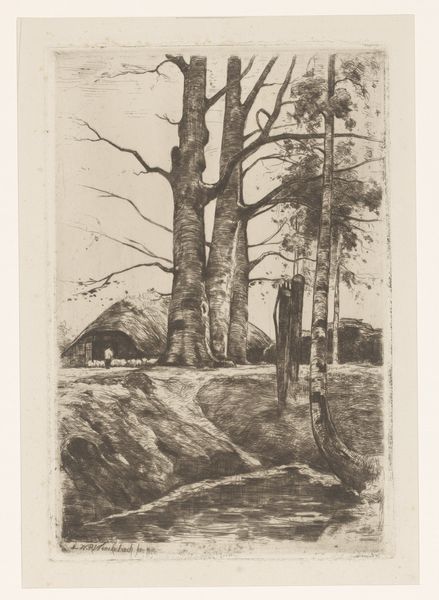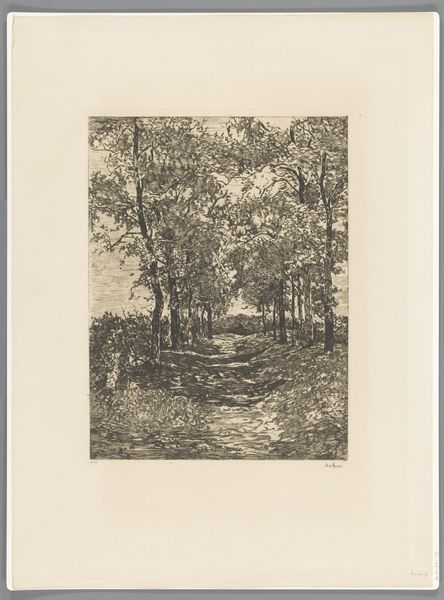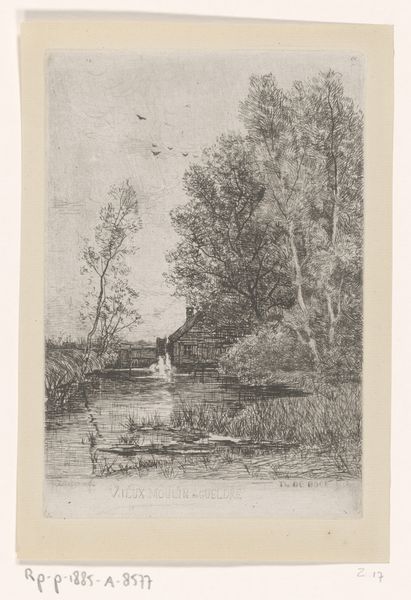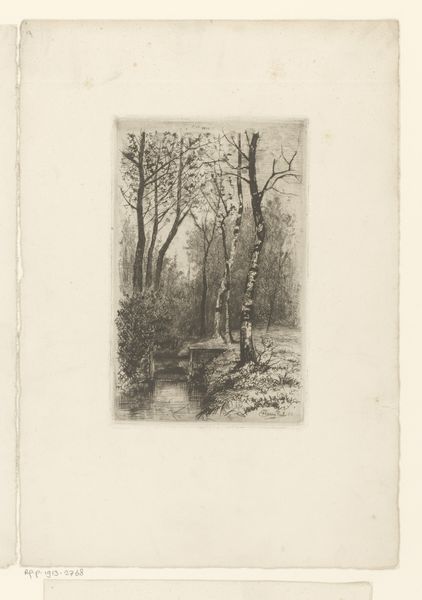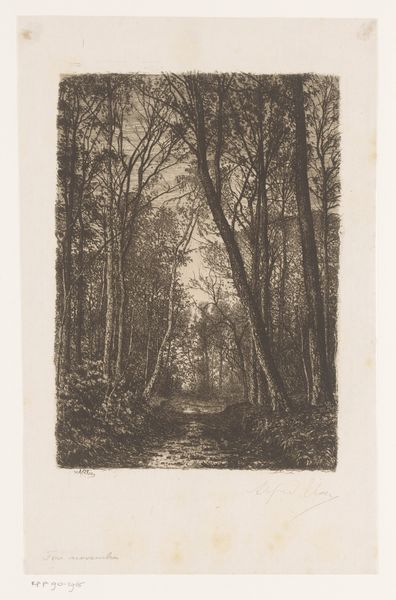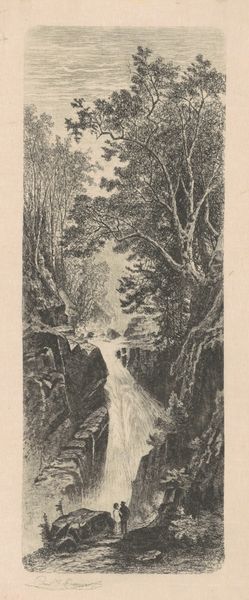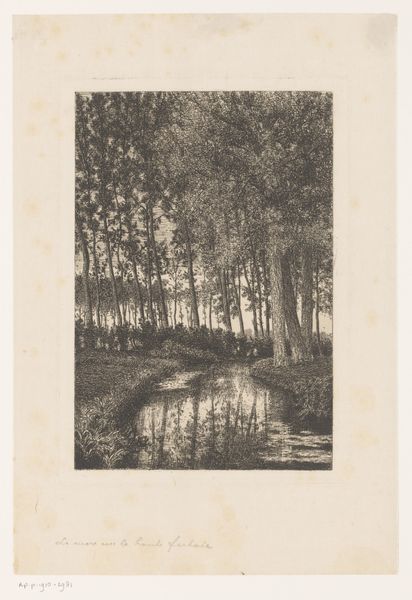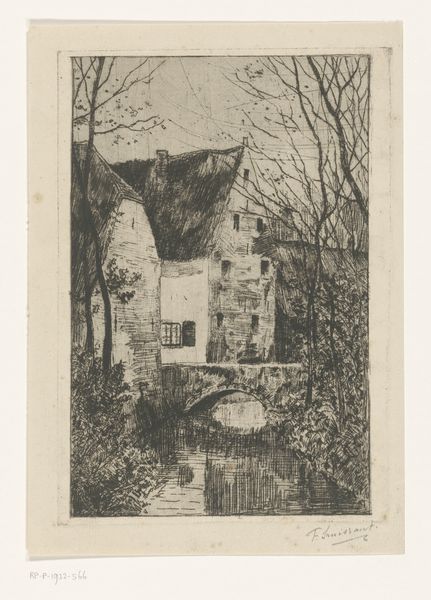
print, woodcut
# print
#
landscape
#
woodcut
Dimensions: height 320 mm, width 243 mm
Copyright: Rijks Museum: Open Domain
Curator: This woodcut before us, created by Emilius Wilhelmus Dehé, depicts a farm and hay barn along the water's edge; it is simply titled "Boerderij en hooischuur aan het water." It was crafted sometime between 1896 and 1944. Editor: My immediate impression is one of stark stillness, like time is suspended here. The monochromatic palette emphasizes the graphic qualities of the print; a rich pattern of light and shadow. Curator: Absolutely. And what strikes me is the choice of medium. Woodcut, typically a laborious process, aligns with the scene itself, suggesting a connection between the rural labour and the art-making. It suggests something deeper, doesn't it, than just a pretty scene. Consider the societal pressures of Dehé's time; the role of labor, nature. Editor: That interplay of light and dark creates dynamic tension. The reflection of the farm buildings in the water almost dissolves, but there’s a counterpoint with the precision and solidity of forms and a tactile quality evident from the process. The visible grain of the woodcut contributes to a formal understanding here. It emphasizes the flatness of the picture plane and calls our attention to surface and design, no? Curator: In seeing the rustic barn against what looks like modern lamps, do we see labor enhanced? Enslaved? This wasn't just an artistic process; it involved labor, resources. The work becomes a symbol of how human activities, in general, shaped this specific Dutch landscape, how resources are converted, and how cultural norms impact lives and land. Editor: Very astute! If we examine it using a formal lens, Dehé created something visually stimulating; there is a sense of organized balance to this, almost symmetry, divided along that reflection in the water. It guides us through its elements, as does the strong contrast. What do you think of this approach, the semiotic significance? Curator: I suppose. It's the social ramifications of labor captured that holds more fascination for me. Thank you. Editor: Indeed! What we are discussing gives the viewer insight into the ways one image can be interpreted so divergently, formally and materially.
Comments
No comments
Be the first to comment and join the conversation on the ultimate creative platform.
